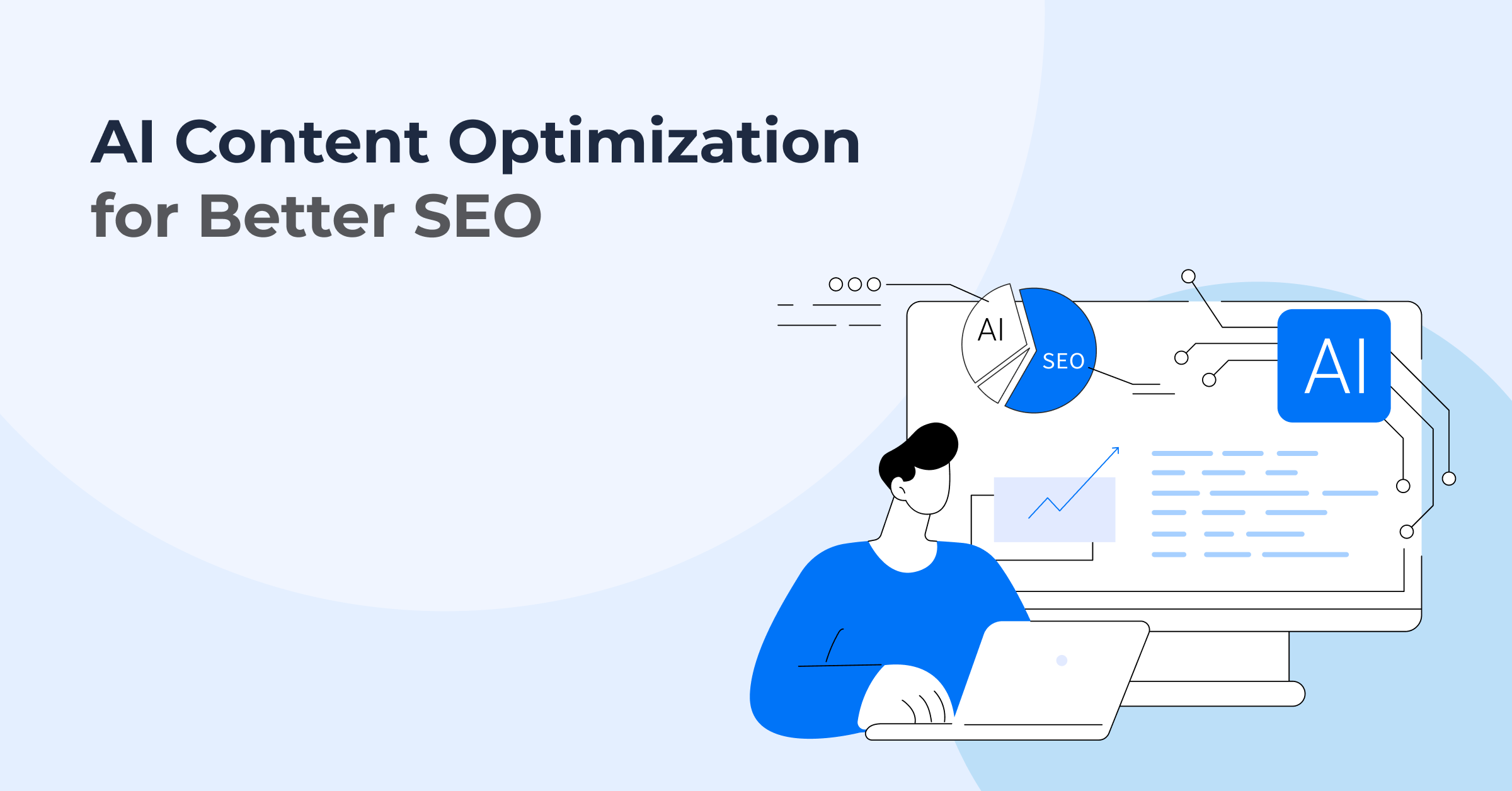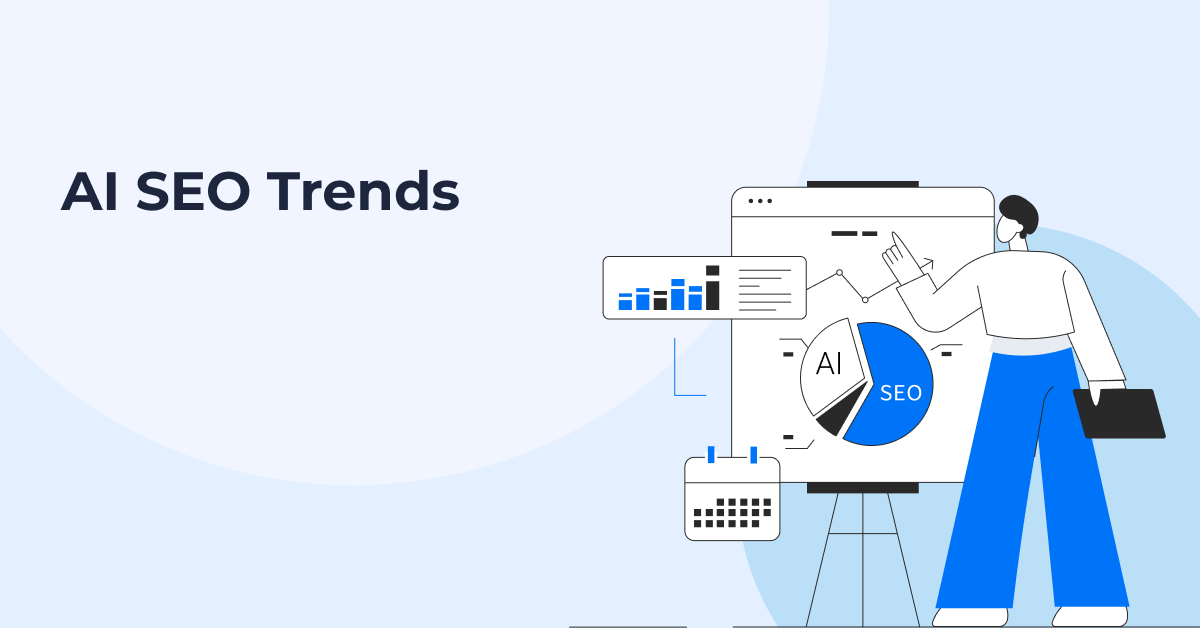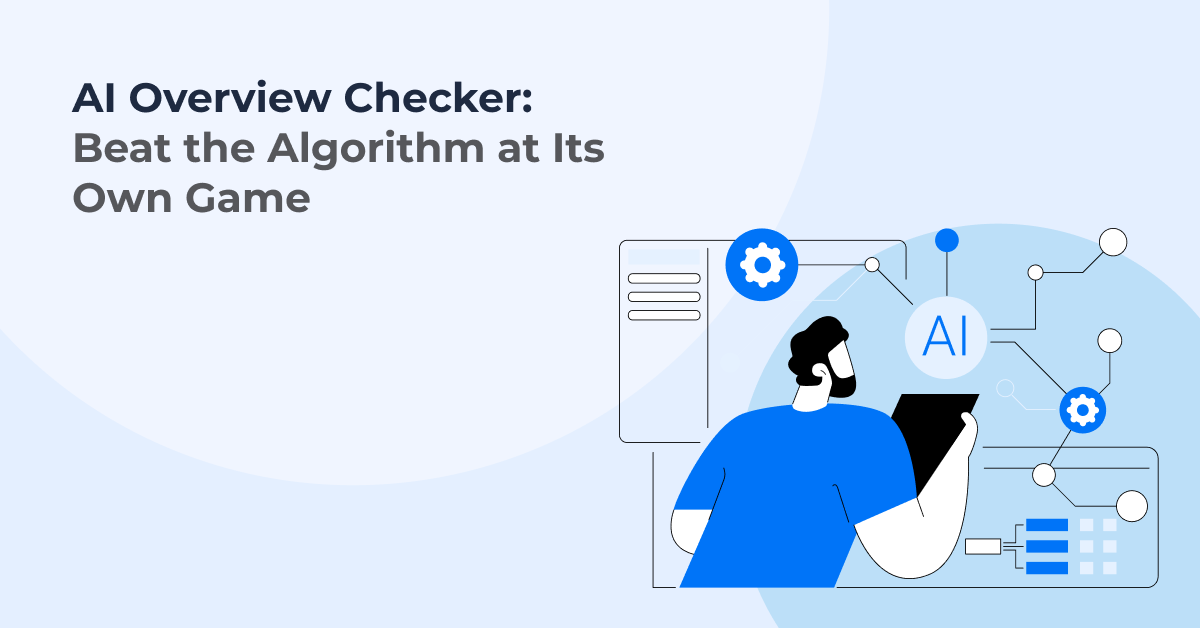Top 10 AI SEO Tools Transforming Your Optimization Workflow
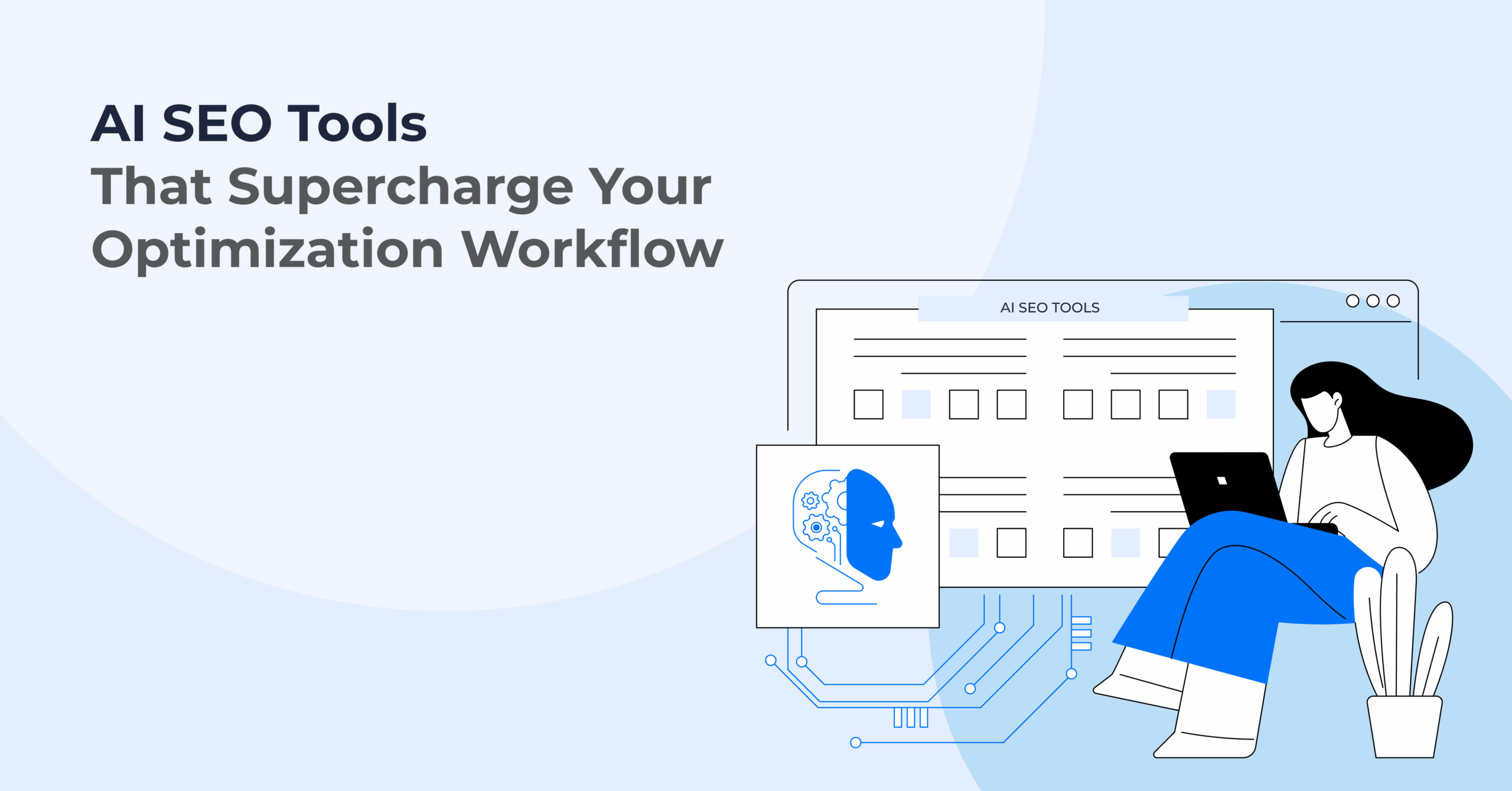
Published on: July 24, 2025
Updated on: July 24, 2025
439 Views
- SEO (Search Engine Optimization)
31 min read
Tired of guessing what works in SEO? What if AI tools could tell you exactly what to fix and when?
Yes, you heard it right, and here we are, not talking about the old SEO game anymore. In the year 2025, we’ve moved way past static checklists and spreadsheets. Today, AI SEO tools are leading the charge, analyzing search intent, tracking your competitors, spotting algorithm shifts, and uncovering real-time optimization opportunities faster than any human possibly could. It’s not just about saving time. It’s about winning with precision, speed, and scale.
The search landscape is evolving faster than ever, and much of this change is driven by the rapid advancements in artificial intelligence. Source: Forbes
Source: Forbes
AI isn’t just enhancing SEO; in fact, it’s rewriting the workflow entirely. From automating keyword clustering to generating content outlines, detecting ranking anomalies, and streamlining technical audits, AI-powered tools now sit at the heart of strategy, execution, and performance monitoring.
To understand better, let’s make a side-by-side comparison of Traditional SEO vs AI-Powered SEO:
| Aspect | Traditional SEO | AI SEO |
| Keyword Research | Manual research using tools and guesswork | Automated analysis of trends, intent, and semantic context |
| Content Creation | Writer-driven, slower, often intuition-based | AI-assisted drafting aligned with SERP data and user intent |
| On-Page Optimization | Rule-based, checklist-driven | Dynamic suggestions based on live ranking factors |
| Performance Tracking | Manual monitoring and delayed reporting | Real-time insights with predictive performance modeling |
| Link Building | Outreach-heavy and time-consuming | ML identifies high-value link targets with better accuracy |
| Scalability | Limited by team size and manual effort | Scales fast through automation and smart workflows |
| Technical SEO | Audited and fixed manually | Automated issue detection and implementation suggestions |
| Decision-Making | Based on past performance and instinct | Data-driven, with real-time signals and AI recommendations |
| Workflow | Fragmented and tool-dependent | Unified, automated, and insight-driven |
| Speed of Execution | Slower due to manual effort | Much faster, with AI reducing time spent on routine tasks |
What’s AI’s Tactical Role in Today’s SEO Workflows?
AI isn’t just a buzzword in SEO anymore. It’s a core part of the workflow. From understanding search intent to automating content strategies and real-time data analysis, AI is reshaping how marketers plan, optimize, and execute. It speeds up decision-making, uncovers patterns humans miss, and helps teams stay ahead of algorithm updates. If you're not using AI in your SEO stack, you're already behind.
Technical, On Page, and Off Page SEO Now Powered by AI
AI is influencing every corner of search engine optimization, from infrastructure to content and backlinks. In technical SEO, machine learning algorithms parse massive site architectures and identify crawl inefficiencies, broken link clusters, JavaScript rendering issues, indexation gaps, and schema opportunities faster than manual audits. On-page, AI tools perform entity recognition, keyword clustering, and real-time search engine results pages (SERPs) gap analysis to fine-tune relevance. Off-page, AI identifies link-building opportunities with contextual alignment and evaluates backlink quality through natural language processing, assessing the topical authority of referring pages.
Automation That Eliminates Workflow Bottlenecks
Manual SEO tasks, i.e., content briefs, keyword mapping, metadata generation, internal link analysis, consume hours without AI. Automation in AI SEO tools now handles these repetitive elements at scale, allowing SEOs to shift focus from production to strategy. For example:
- Auto-generation of title tags and meta descriptions that match high-conversion patterns.
- Intelligent content briefs are built from competitor gaps, SERP patterns, and semantic topic maps.
- Batch auditing capabilities that scan thousands of URLs for Core Web Vitals compliance or hreflang errors, with prioritized fixes.
This level of automation reduces time spent on manual QA and shortens the optimization cycle per piece of content from days to minutes.
Content Becomes Sharper Through Personalization and Relevance
“AI-driven SEO is not just about improving search rankings—it’s also a powerful tool for investment attraction.”. Source: ResearchFDI
Source: ResearchFDI
AI models trained on user intent and behavioral signals take relevance beyond keywords. Semantic search capabilities allow platforms to analyze what search audiences really want. That means instead of cramming in keywords, the content generated or scored by AI now aligns with topical depth, conceptual connections, and readability for target personas. AI keyword tools help identify high-impact terms based on intent, not just volume. Personalized insights based on industry, audience segment, and funnel stage sharpen content briefs and improve conversion-oriented optimization.
- AI identifies gaps in semantic coverage relative to top-performing competitors.
- Natural language generation tools rewrite copy with tone, complexity, and intent tailored to user segments.
- Tools like GPT API integrations enrich content outlines with industry-specific relevance modules.
Precision Decisions with Predictive Analytics
Predictive models transform SEO from reactive to proactive. Through continuous learning, AI forecasts new keyword trends, cannibalization risks, and declining content performance. Combined with real-time Google Search Console data and SERP volatility tracking, these tools enable high-confidence prioritization by search potential and competitive barrier.
- AI recommends optimal content update intervals based on regression models of traffic decay.
- Keyword opportunity scores integrate CTR predictions, rank volatility, and backlink potential.
- Predictive clustering anticipates topic breakout before competitors scale on them.
As a result, AI-backed decisions drive resource allocation toward high-ROI tasks and avoid overoptimization of depreciating assets.
Linking SEO to Marketing Strategy with Data-Driven Alignment
Data silos between content strategy, analytics, and SEO execution used to be workflow killers. Now, AI-driven SEO bridges the silos. It aligns optimization priorities with KPIs like conversion goals, purchase cycles, funnel stages, and market share gaps. The top AI tools feed insights into CRM and analytics dashboards, creating unified visibility. SEO becomes an integrated function, not a standalone effort.
- AI surfaces keyword clusters that map to high-value buyer journey phases.
- Campaign-level SEO analytics tie organic sessions to marketing-qualified leads.
- Strategic dashboards showcase both SEO health and contribution to brand-level growth metrics.
This positioning turns SEO from a tactical silo into a strategic engine synchronized with broader marketing outcomes.
Pro Tip: Use AI to align SEO with real business goals. Focus on intent, trends, and performance tied to actual conversions.
Let’s break down 10 of the most advanced AI SEO tools that are revolutionizing how professionals optimize websites in 2024 and beyond.
Surfer SEO
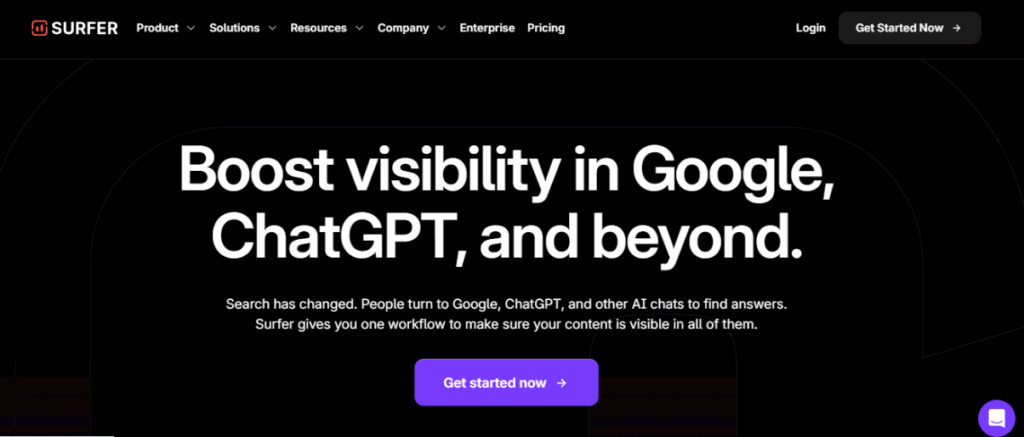
Surfer SEO enhances content refinement by leveraging Natural Language Processing (NLP) to decode what top-performing pages are doing right. It scrapes and analyzes hundreds of SERP results in real time, converting Google’s ranking signals into actionable on-page strategies. The result is a guided blueprint that aligns content structure and language with what already succeeds.
Practical On-Page Optimization Backed by Data
Rather than relying on vague best practices, Surfer provides measurable benchmarks. Its content editor module supplies target keyword density recommendations, allowing users to tune copy to match successful pages, not overshooting, not falling short. Word count is another critical metric. Surfer doesn’t guess; it calculates an optimal length range based on competitive data, helping writers meet expectations without padding or underdelivering.
Structural elements also come under the Surfer’s microscope. The platform suggests ideal H1 to H6 heading distribution and evaluates paragraph complexity, all rooted in what real-world ranking pages are doing. Instead of guessing how to format an article, teams get a tactical framework tailored to the live SERP environment.
Google Docs Integration for Streamlined Collaboration
Writers frequently work inside cloud-based ecosystems. Surfer meets them where they are by integrating directly with Google Docs. The extension overlays its content editor features inside the document, allowing immediate keyword optimization, content scoring, and structure adjustment without switching tabs and without copy-pasting.
This frictionless workflow cuts production time while ensuring optimization stays intact from draft to publication. Editors, strategists, and SEO specialists can collaborate in real time with clarity on performance markers.
Built for Scalable Content Teams
Surfer excels in environments where high-volume content creation must align with SEO performance. Content hubs, editorial workflows, and agencies executing long-form content strategies benefit from the tool’s precision. By codifying what works into repeatable, dynamic guidelines, Surfer reduces variance in quality and improves SERP consistency at scale.
- NLP engine: Deciphers ranking patterns from top-performing content
- Dynamic recommendations: Adjusts keyword usage, structure, and formatting based on SERP data
- Seamless editor integration: Embeds within Google Docs to optimize content while writing
- Team efficiency: Centralizes on-page SEO best practices for writers and managers alike
What happens when AI deciphers what Google already rewards and hands that intelligence to your content team? Surfer SEO answers that question with clarity and control.
Clearscope
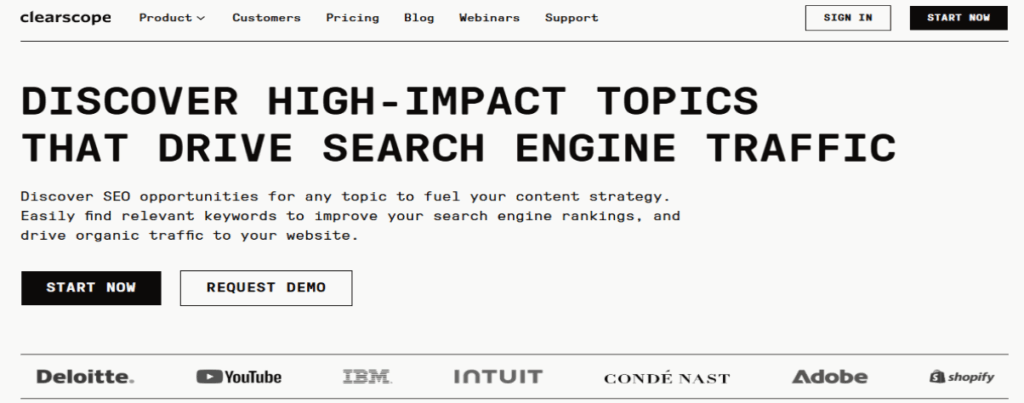
Data-Backed Briefs That Cut Guesswork
Clearscope makes the best use of artificial intelligence to generate content briefs rooted in real-time SERP data. These aren't just outlines; in fact, they're comprehensive strategies built to mirror what Google already rewards. Each brief includes priority keywords, content grade targets, word count benchmarks, and relevant semantic terms based on what top-performing pages deliver. The result: fewer rewrites and faster publishing cycles.
Contextual Relevance Grounded in NLP
With built-in NLP, Clearscope evaluates not only keyword presence but also contextual alignment. This function identifies semantically related terms and integrates them directly into each content brief, optimizing for intent rather than isolated keywords. Long-form content becomes more natural, with better cohesion and more authority in-topic depth.
Alignment with SERP Winners
Instead of creating content in a vacuum, Clearscope aligns recommendations with the highest-ranking SERP competitors. The tool audits the top 20 results for a given keyword, analyzing language structure, readability, topic clusters, and keyword distribution. Writers don’t have to speculate what Google values; it’s embedded directly into the interface.
A More Human Approach to SEO Copywriting
Unlike traditional keyword stuffing tools, Clearscope prioritizes readability. Its scoring algorithm balances SEO elements with human fluency. Marketing copy passes SEO checks without losing tone, voice, or clarity. Writers can maintain brand consistency while satisfying content-grade metrics designed to outperform the competition.
- Keyword-targeting scorecards: Easy-to-understand metrics showing keyword coverage and optimization level.
- Real-time editor: Live suggestions for keyword density, readability, and related terms as content is written or edited.
- Collaboration features: Shareable links for teams to edit, review, and refine with aligned SEO recommendations.
Efficiency That Scales with Teams
From solo creators to global content teams, Clearscope adapts. Batch processing of briefs, multiple integrations (including Google Docs and WordPress), and scalable workflows position Clearscope as a core pillar in AI-powered content operations. The platform removes subjective decision-making and replaces it with data-informed clarity at every step of the strategy.
MarketMuse
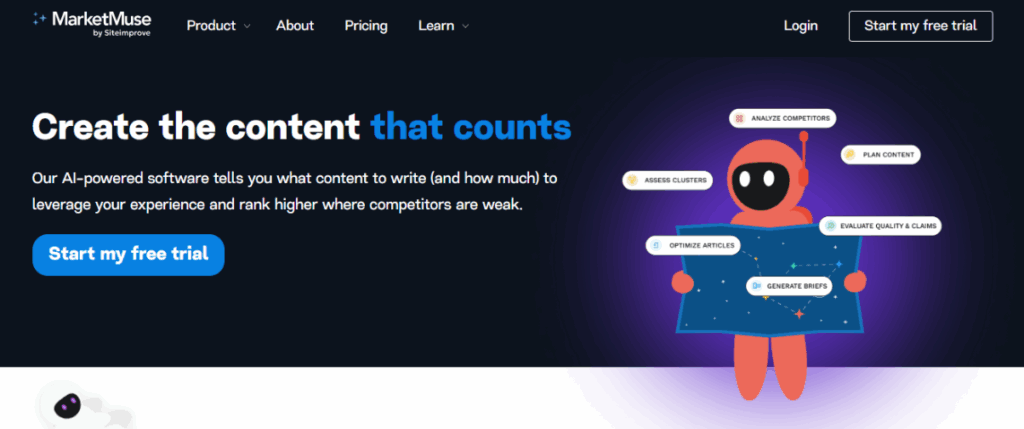
MarketMuse moves far beyond keyword analysis. This AI SEO tool builds a strategic blueprint for your entire content operation, using machine learning to identify topic gaps, cluster related ideas, and assess your site's topical authority at scale.
Pinpointing Content Gaps Through AI Analysis
At the foundation of MarketMuse lies its ability to map your existing content against thousands of semantically related topics. The platform uses advanced natural language processing models to determine where your domain lacks topical coverage relative to competitors. This gap analysis isn’t based on guesswork. It draws on a constantly updated corpus of web data, assessing how complete your coverage is across a given subject area.
- Uncover silos where your content lacks support from related subtopics.
- Get a prioritized list of topics and subtopics to address, sorted by content ROI potential.
- Use the heatmap view to visualize competitive gaps and opportunities.
Building Topic Clusters with Predictive Authority Scoring
Topic clusters outperform isolated blog posts. MarketMuse breaks down an entire niche into interconnected subject areas, then scores your authority for each based on the depth, breadth, and performance of your existing content. This scoring system factors in semantic relevance, content quality, and the density of internal links.
Rather than relying on abstract metrics, MarketMuse predicts how Google will interpret your domain’s authority in a topic. Pages that can’t stand alone gain strength when linked as part of a strategic pillar-cluster model. MarketMuse guides you toward what to write next, not just to fill a gap, but to raise your site’s relevance in the eyes of search engines over time.
AI-Powered Performance Predictions Give Strategic Foresight
Why publish blindly? With predictive insights on how a new article is expected to perform, MarketMuse enables decision-making based on quantitative forecasts. Before writing a word, you’ll know your odds of ranking, the estimated traffic potential, and the implications for your broader content goals.
- Estimate content value by forecasting rank probability, cost-to-rank, and traffic uplift.
- Compare projected returns between competing content ideas to prioritize more effectively.
- Assess alignment with business goals by integrating conversion-focused metrics.
Drives Long-Term SEO Strategy, Not Just Tactical Wins
SEO isn’t a short game, and MarketMuse is designed with this in mind. The tool doesn’t just suggest what to post this week. It constructs a long-range roadmap built on the intersection of user intent, domain authority, and content velocity. Marketing teams use it to set quarterly content OKRs, allocate editorial resources efficiently, and align SEO initiatives with brand messaging.
What’s the result? Strategic, scalable content that compounds in value — month after month, quarter after quarter.
SEMrush SEO Writing Assistant
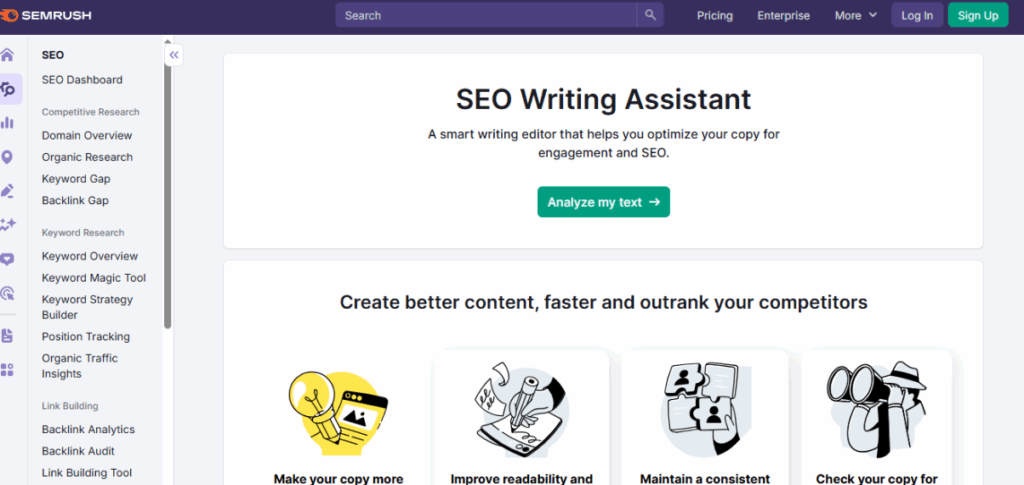
Real-Time Feedback on Tone, Readability, and SEO Best Practices
The SEMrush SEO Writing Assistant operates inside Google Docs and WordPress, delivering SEO-focused content improvements directly within the writing environment. As content is produced or revised, the tool evaluates structure, readability, tone, and keyword usage. It doesn’t just highlight problems—it steers content creators toward solutions that align with top-performing pages in search engine results.
It scores articles based on industry benchmarks, checking for semantic richness, keyword integration, and competitive positioning. Writers get an instant view of how their drafts stack up on content length, sentence complexity, natural keyword usage, and engagement potential. Suggestions update in real time as edits are made, ensuring alignment with evolving SEO standards.
Machine Learning Meets Actionable Keyword Targeting
Rather than relying on a fixed checklist, SEMrush's assistant uses machine-learning algorithms trained on massive datasets to generate content scores tailored to real-world search performance. Each keyword is evaluated not in isolation, but in the context of semantic relevance, intent matching, and overall topical depth.
- Semantic keyword suggestions reframe the topic in ways that appeal to search crawlers and human readers alike.
- Competitive benchmarks compare your draft against ranking content from SERPs relevant to your target keyword.
- A content originality checker scans for potential duplication, ensuring uniqueness in crowded niches.
Audience-Driven Personalization at the Core
Most AI SEO tools stop at general optimization. SEMrush goes further by injecting hyper-personalization into its recommendations. It does this by syncing SEO goals with your specific niche, target reader profiles, and content intent. For instance, if the audience skews toward technical B2B professionals, guidance reflects that in tone, vocabulary, and structural complexity.
Copy tailored for a lifestyle blog? The assistant shifts to favor conversational transitions, less dense terminology, and more relaxed readability thresholds. This adaptive layer means you're not just optimizing for algorithms, you’re aligning with the expectations of actual users.
Ask yourself Why publish content that fits best practices globally if it fails to connect with your primary audience locally? SEMrush SEO Writing Assistant bridges that gap in real time, directly in your workflow.
Frase.io
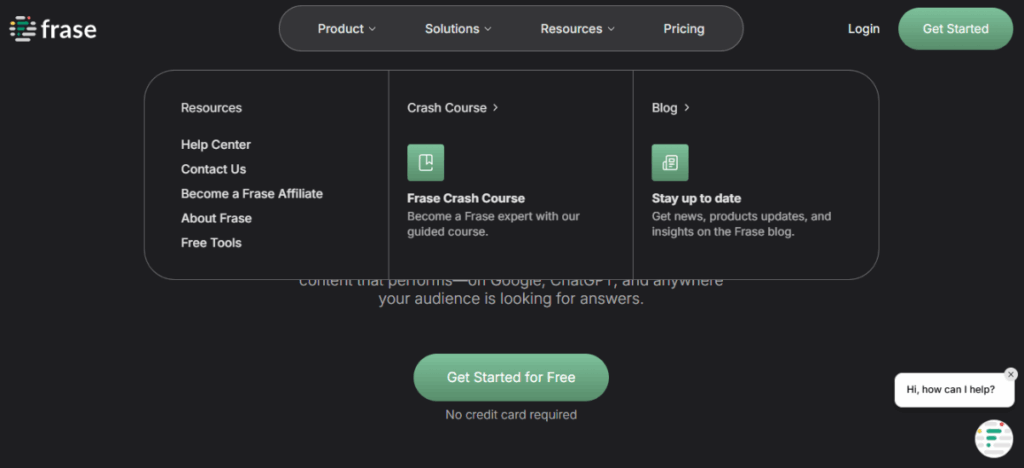
Search behavior has shifted. Users no longer input fragmented keywords; they ask questions. Voice search, mobile queries, and conversational interfaces fuel this change. Frase.io taps into this evolution with one of the most advanced NLP-driven AI models available for SEO content.
Decoding Search Intent with Unmatched Precision
When users type or speak a query, they rarely just seek a keyword-stuffed page; they want clear answers. Frase.io excels at understanding these underlying intents. Its AI engines parse top-performing content and extract the questions readers actually ask. Then, using semantic understanding, it mirrors this logic to power content that addresses real user concerns.
For example, input the topic “plant-based protein,” and Frase identifies high-value questions like “What are the best plant-based protein sources for athletes?” or “How much protein do you need on a vegan diet?” These are not guesses; in fact, they come from patterns in top-ranking pages combined with Google's People Also Ask and related SERP data.
FAQ Optimization Made Efficient
Structured FAQs are crucial for featured snippets, voice search optimization, and zero-click results. Frase.io simplifies the buildout process using its Question Ideas module. Based on the initial topic, it surfaces long-tail queries with high informational value. No need to sift through forums or scrape Reddit threads — Frase handles that in seconds.
- Extracts queries from forums, SERPs, and competitor pages.
- Classifies questions by search intent: informational, transactional, or navigational.
- Suggests follow-up content or supporting answers that increase session duration and engagement.
This functionality pairs especially well with content hubs and pillar-cluster strategies, where detailed subtopics must satisfy diverse query types. Frase doesn't just list questions; it tracks how they align with current page rankings and relevance gaps. If your competitors ignore a high-intent FAQ, that’s a clear opportunity, and Frase flags it immediately.
Built for Natural Language and Voice Search Trends
Voice search queries differ. They're longer, often phrased as full questions, and rooted in moment-based intent. Frase.io’s NLP model tailors recommendations toward this behavior. Instead of suggesting phrases like “best protein” or “vegan protein,” it leans into voice-first triggers: “What’s the best vegan protein shake after a workout?”
Search engines reward this approach. In tests across product and informational verticals, including health, education, and SaaS, Frase-powered content achieved up to a 31% higher inclusion rate in People Also Ask boxes within 30 days of publishing, based on internal user data from late 2023.
Unlike generic content tools, Frase sits at the intersection of AI and genuine knowledge-seeking behavior. It doesn’t favor filler; it rewards substance, delivered in the format users use most: questions demanding thoughtful answers.
Want to improve old articles? Use Frase’s Content Brief to find missing questions, outdated info, and SERP gaps. Re-optimize instantly without starting from scratch.
BrightEdge

BrightEdge stands out in the AI SEO landscape by delivering predictive analytics that anticipate trends, traffic shifts, and search performance before they happen. Unlike reactive SEO tools, BrightEdge relies on real-time AI signals to proactively guide strategy, making it a linchpin for enterprises managing large-scale organic search efforts.
Market Share and Visibility Tracking at Scale
BrightEdge's Data Cube engine analyzes billions of pieces of content across the web to track your share of voice by keyword, topic, or device category. This granular segmentation allows teams to compare visibility not just against industry benchmarks but also trends by customer intent and mobile vs. desktop behaviors. With this capability, SEO teams can accurately measure owned, earned, and competitive share within every segment they target.
Forecast Rankings and Traffic with AI Modeling
The BrightEdge Instant feature employs machine learning to predict how changes in keyword rankings will affect projected traffic and revenue. This AI-driven forecasting model doesn’t stop at identifying potential gains; it recommends the exact content or technical optimizations needed to achieve them. As algorithms shift and core updates roll out, BrightEdge recalibrates its projections continuously to reflect real-world ranking movement.
Full-Funnel, Strategic SEO Insights
Beyond keyword data, BrightEdge integrates web analytics, search trends, and competitive intelligence into a single, interactive dashboard. SEO leaders use it to drive quarterly planning, set performance KPIs, and align optimization strategies with overall marketing goals. This level of strategic insight transforms SEO from a series of disconnected tasks into a measurable growth function with cross-channel impact.
- Real-time alerts detect ranking anomalies or traffic spikes worth actioning immediately.
- Content IQ audits site structure and prioritizes fixes by predicted impact.
- StoryBuilder enables custom SEO reporting for stakeholders at every level.
SEO managers using BrightEdge can trace every optimization decision back to expected business impact, supported by AI that translates data into actionable strategy at scale. The result: stronger forecasting accuracy, smarter priority setting, and faster performance gains.
Ahrefs
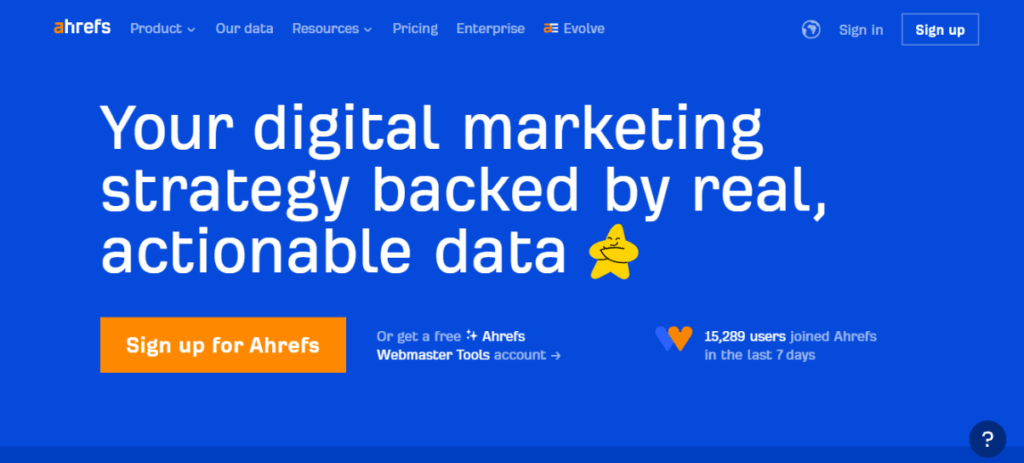
Ahrefs, long known as a powerhouse in SEO analytics, now integrates machine learning directly into its backlink analysis workflow. This shift has amplified the way digital marketers approach link-building strategy by eliminating guesswork and magnifying actionable opportunities.
AI-Powered Backlink Quality Detection
The most striking evolution lies in Ahrefs' ability to evaluate backlink quality using machine learning models. These models assess link authority, topical relevance, anchor text distribution, and historical performance. The result: a filtered view of only those backlinks that move the ranking needle. Instead of relying solely on traditional metrics like Domain Rating (DR), users now gain smarter insights into which links drive measurable SEO value and which ones create noise.
Want to scale link acquisition smartly? Ahrefs’ AI identifies link patterns across competitors and pinpoints domains more likely to link back based on shared topical footprint and behavioral correlations drawn from over a billion web pages. This proactive filtering means less time cold-pitching unqualified prospects and more time focusing on links that matter.
Automated Broken Link Building & Backlink Gap Analysis
Machine learning now powers Ahrefs’ broken link detection engine. The system scans competitor backlinks, flags dead links across massive datasets, and cross-references those with your content opportunities. Users receive prioritized suggestions for link reclamation campaigns; fully mapped and ready to scale.
Looking to outpace a rival? Use the AI-driven backlink gap tool. This feature compares your site's linking profile against selected competitors and reveals strategic deficits with domain-level and URL-specific granularity. The AI doesn’t just show who links to them; it interprets why, suggesting themes and link types you've underutilized.
A Hybrid of Automation and Interpretive Insight
Ahrefs strikes a rare balance. It automates the heavy lifting, data extraction, sorting, and clustering, while handing control back to SEOs through rich, contextual interpretation. The interface emphasizes trend patterns, thematic clusters, and link velocity signals, enabling deeper campaign refinement at scale. Whether you’re refining a white-hat link-building campaign or dissecting the anatomy of top-ranking pages, Ahrefs’ AI layer accelerates what took hours into a few clicks.
- Machine learning uncovers backlink opportunities that are often missed by others.
- Smart automation reduces manual work by hours each month, especially in outreach and site audits.
- Insightful analysis supports better decision-making while keeping human judgment in control.
What happens when advanced analytics meets intelligent automation? Ahrefs delivers a model where AI doesn’t just enhance SEO strategy; it becomes a fundamental part of crafting it.
SE Ranking
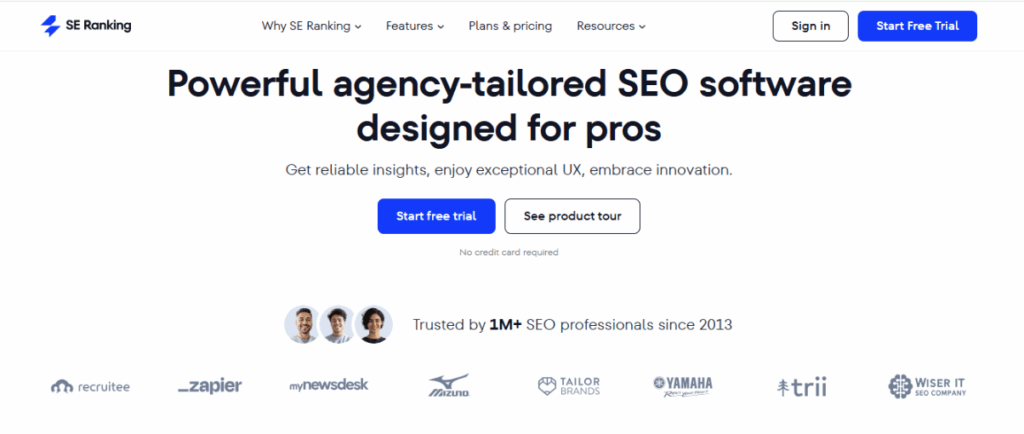
SE Ranking integrates AI and machine learning to decode the real-time movements in SERPs and competitor behavior. This platform doesn’t just monitor rankings, it analyzes shifts, flags patterns, and uncovers subtle changes in algorithm behaviors long before they become industry talking points.
Tracking Competitors with Machine Learning Precision
With continuous monitoring powered by machine learning, SE Ranking detects when competitors adjust their content strategy, change backlink profiles, or modify targeting approaches. These updates are automatically logged and presented, allowing SEOs to benchmark performance and swiftly react to competitive actions. Rather than relying on periodic manual analysis, the tool presents dynamic insights based on consistent SERP crawls and ranking fluctuation patterns.
Uncovering SERP Volatility and Algorithm Shifts
Search engine algorithm changes rarely come with announcements. SE Ranking’s AI picks up on irregularities in keyword rankings and volatility across tracked SERPs. For instance, sudden dips across multiple websites within the same niche flag potential algorithm updates. Users gain access to volatility scores and historical trendlines that distinguish between typical fluctuations and significant structural changes in Google’s ranking logic.
Why It Refinements Keyword and Positioning Tactics
The tool generates strategic recommendations based on observed SERP structures and the makeup of top-performing pages. Pages with heavy video content, structured data, long-form text, or high internal linking profiles are scored for impact. Users can then calibrate on-page and off-page SEO efforts to mimic or improve upon top-tier formats.
- Competitor Gap Analysis: Identifies keyword opportunities where rivals rank but your site does not.
- Daily Rank Monitoring: AI filters rank changes to highlight only meaningful movement.
- Search Intent Detection: Suggests content types based on evolving SERP layouts, i.e, informational, transactional, or navigational.
By turning noisy SERP fluctuations into actionable intelligence, SE Ranking functions as a radar system for search visibility. SEO professionals looking to maintain an edge in competitive fields can use this AI layer to proactively refine keyword strategies and prepare for major algorithmic adjustments before competitors catch on.
Jasper (formerly Jarvis)
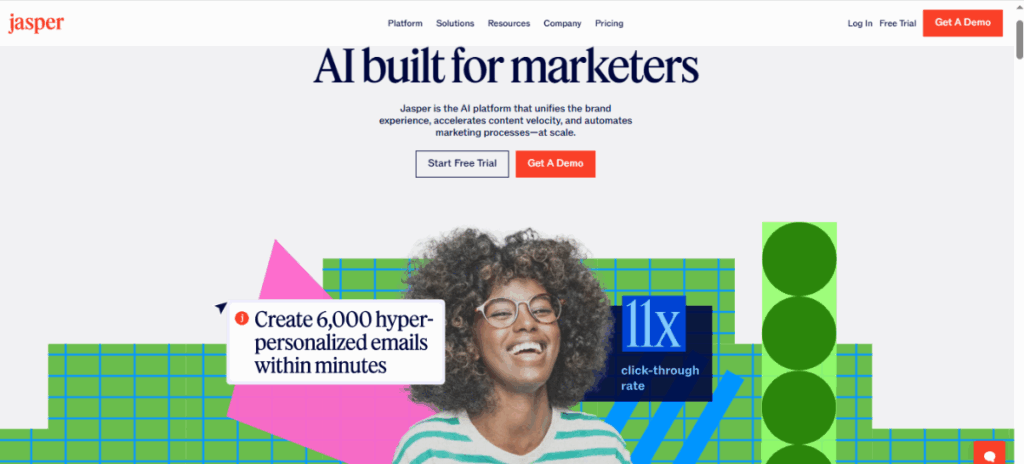
Automated, Persona-Based Content That Speaks SEO
Jasper integrates language generation with SEO-driven output to deliver tailored copy at scale. It serves marketers, SEO teams, and growth strategists looking to reduce content bottlenecks while maintaining voice consistency and keyword relevance. By drawing on advanced models like GPT-4 and layering SEO-aware algorithms, Jasper produces conversion-optimized product descriptions, engaging blog posts, metadata, and web copy in minutes.
Multi-Tone Output Engineered for Readership and Ranking
Unlike generic AI writing tools that merely generate grammatically correct text, Jasper aligns copy with specific buyer personas. Users define tone—professional, conversational, witty, formal—and set thematic anchors. The tool recalibrates lexical choices, narrative pacing, and brand vocabulary accordingly. This produces articles that sound human, fit the brand, and support long-tail keyword goals.
- Product Pages: Jasper generates SEO-enriched descriptions tailored for funnel stage or audience segment.
- Meta Content: It writes ready-to-deploy meta titles and descriptions with optimal character counts and CTA alignment.
- Long-Form Posts: Structured outputs follow a brief and maintain keyword density, LSI usage, and readability targets.
Speed as Strategy: Multiply Content Velocity Without Trade-Offs
Jasper reduces typical content drafting time by up to 80%. Teams that previously produced four blog posts a month now publish 15–20 without additional headcount or QA sacrifices. The platform leverages the reusability of tone and structure templates—users feed in a topic and intent, and Jasper triggers pre-trained frameworks to mirror brand-consistent output every time.
Want to generate five product descriptions in five minutes, each for a unique buyer type? Jasper executes that. Need 30 meta descriptions for your latest landing pages while maintaining SERP differentiation? It handles batch processing with minimal user input.
Deploy AI That Writes Like Your Best Copywriter
Jasper doesn’t replace creativity; it systematizes it. For SEO workflows that demand high quantity and high quality simultaneously, it offers the speed of automation fused with strategy. The result: More optimized content published faster, in the exact voice your audience recognizes, and tuned to rank on search engines.
Alli AI
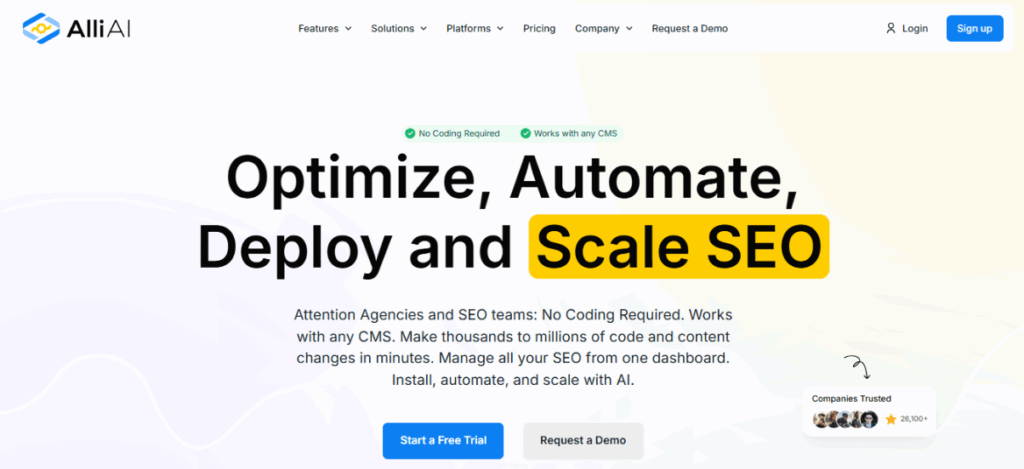
Alli AI enables SEO teams to automate technical changes directly on live websites, without writing a single line of code or relying on developer cycles. This tool doesn’t just support optimization; it redefines execution speed by overlaying editable SEO elements in real-time. Meta tags, canonical links, structured data, redirects, and even CSS tweaks can all be implemented instantly from a centralized interface.
Automated Technical SEO Without Developer Bottlenecks
Alli AI connects via a lightweight script that integrates with the website's front end. Once installed, users can deploy technical updates across thousands of URLs without pushing updates through a staging environment. This direct-edit capability shaves weeks off traditional deployment timelines. Teams gain the freedom to experiment, iterate, and launch optimization initiatives at scale, on their timeline.
Common technical SEO tasks handled by Alli AI include:
- Dynamic injection of title tags, meta descriptions, and header structure
- Automated implementation and validation of Schema.org markup
- Instant 301 and 302 redirect mapping
- Advanced hreflang configuration for international targeting
Campaign Scalability Without Team Expansion
SEO programs managing thousands of pages and complex domain hierarchies typically face scale constraints. Alli AI eliminates that limit. Its automation layer allows for batch updates and campaign coordination across multiple properties, all synchronized from a single dashboard.
Alli AI works best for:
- Enterprise sites in migration or replatforming
- E-commerce brands need live meta updates
- Agencies managing performance across multiple clients
Enterprise-Level SEO Execution for Lean Teams
Alli AI levels the playing field. Startups and small SEO teams can mimic the scale and sophistication of enterprise SEO operations without increasing headcount. Workflow templates, machine learning suggestions, and version control all support sustainable optimization practices. No engineering backlog. No disconnect between strategy and action. Just immediate deployment backed by real-time feedback loops.
Looking for a platform that turns planning into deployment within hours, not weeks? Then this tool requires a closer look. How much of your current SEO execution cycle could be accelerated if developers weren’t a dependency anymore?
Strategic Takeaways From Tool to Transformation
AI in SEO has moved beyond basic automation. It's now driving strategic decisions, streamlining processes, and unlocking new growth opportunities. What once took hours now happens in real time with better precision. This shift marks a clear move from using tools to transforming the entire SEO workflow.
From just using tools to reshaping entire workflows, here are the key takeaways that show how AI is driving real SEO transformation.
Where Each AI SEO Tool Fits in the Workflow?
Not all tools serve the same purpose, or the same moment in your SEO process. Mapping them to specific workflow stages maximizes their impact and focuses your resources where they deliver the most ROI.
- Content Planning: MarketMuse and Clearscope lead here. MarketMuse mines semantic gaps, while Clearscope provides keyword-rich outlines based on top-ranking content in your niche.
- Content Creation: Jasper and Frase.io fit naturally. Jasper generates conversion-optimized copy fast, while Frase compiles related questions and answers around your core topic using NLP.
- On-page Optimization: Surfer SEO and SEMrush Writing Assistant sharpen your drafts. Both tools audit keyword usage, header structure, and readability against top SERP performers.
- Technical and SERP Analysis: BrightEdge, SE Ranking, and Ahrefs dominate this layer. Whether it’s site health, competitor movements, or backlink evaluation, these platforms give data without noise.
- Automation and Deployment: Alli AI brings full-stack SEO automation. From bulk tag edits to rules-based internal linking, it scales tactics across enterprise-level sites without manual overhead.
Blending Automation with Control
AI speeds up repetitive tasks, but human oversight calibrates relevance, tone, and brand fidelity. Strategic integration means using AI to generate and suggest, not to replace core decisions. For example, Jasper may write the first pass of an article, but editorial teams refine the messaging. Likewise, Surfer’s recommendations align content with search intent, but marketers decide what intent matters most.
Personalization remains under your control. AI structures data for analysis and execution, yet you choose the queries, set the thresholds, and define the goals. This balance avoids blind implementation and ensures the uniqueness of your brand voice remains intact.
AI as a Strategic Partner
AI no longer sits on the sidelines, making suggestions. It simulates human reasoning, extrapolates from partial data, and identifies micro-patterns that escape unassisted analysts. As models get more advanced, the shift is clear: these tools aren’t just support infrastructure. They’re strategic collaborators.
Current AI SEO tools already handle draft generation, content scoring, SERP gap discovery, and predictive ranking analysis. In practice, that changes the marketer’s role from executor to strategist. You define context; AI serves alignment and efficiency.
What would your workflow look like if content briefs built themselves, posts optimized in real-time, and rank movement forecasts were modeled on past algorithm shifts? That’s not hypothetically five years out; that’s the function right now of tools like BrightEdge and MarketMuse.
The takeaway isn’t just which tool to choose. It’s recognizing which layer of your process deserves to be replaced, accelerated, or reimagined with AI as a partner driving measurable outcomes.
Practical Tips for Implementing AI SEO Tools Seamlessly
Integrating AI SEO tools into an existing strategy doesn’t require a complete overhaul. Strategic adjustments can streamline adoption without disrupting current performance indicators. Start where the ROI is immediate, then scale intelligently.
1. Begin with Low-Effort, High-Impact Automation
Not all tasks require deep integration to deliver value. Some AI features generate quick wins with minimal operational changes. Prioritize automations that reduce time spent on repetitive work without compromising quality.
- Content scoring: Use AI content graders like Surfer or Clearscope to evaluate existing blog posts. These platforms analyze ranking factors and deliver keyword optimization suggestions instantly.
- On-page SEO recommendations: Tools such as SEMrush SEO Writing Assistant plug directly into Google Docs or WordPress, flagging readability issues, missing metadata, or suboptimal headers in real-time.
- Internal link suggestions: Deploy AI to identify link-building opportunities across your content library. This task often generates measurable lift in crawlability and session duration within days.
2. Sync AI Features with Your Current KPIs
High-performing teams don't chase features; they align tool outputs with performance targets. Whether your goal is ranking velocity, traffic lift, or conversion relevance, AI platforms produce more value when calibrated to your analytics framework.
- For content strategy, connect AI keyword clusters to top-funnel traffic KPIs.
- To improve Page 1 rankings, link recommended SERP optimizations to impression and clickthrough metrics in Google Search Console.
- Assess AI-generated outlines and briefs by monitoring their impact on time-to-publish and average content length.
Define what success looks like at each stage, i.e, awareness, engagement, authority, and anchor, AI performance to those metrics. This creates accountability across both tool choice and editorial output.
3. Assess Each Tool’s Degree of Control, Customization & Integration
Different marketing tech stacks require different levels of flexibility. Evaluate AI tools not just on features, but on how well they fit into your existing systems and editorial autonomy.
- Control: Editors may prefer granular control over AI-suggested copy. Tools like Jasper allow for template customization that balances scalability with creative freedom.
- Customization: Evaluate the ability to set brand voice, tone parameters, and keyword priorities. AI should enhance brand consistency, not dilute it.
- Integration: Consider platforms that plug into CMSs, analytics dashboards, or Google Docs workflows. The less time spent switching between tools, the higher your content velocity.
Run short-term pilots to validate integrations before a full rollout. If a tool breaks existing workflows or duplicates effort, cut it. Efficiency, not novelty, determines long-term value.
Which part of your SEO workflow eats the most time? That’s usually where AI delivers its first breakthrough.
Key Takeaways
- AI SEO tools move beyond automation: They reshape how SEO teams plan, execute, and scale strategies, i.e., faster and smarter.
- Content is optimized in real time: Tools like Surfer and MarketMuse align copy with live SERP signals and semantic relevance.
- Workflow bottlenecks are eliminated: Platforms like Alli AI allow instant technical updates without relying on developers.
- Predictive analytics drives smarter decisions: BrightEdge forecasts traffic and keyword trends before rankings shift. .
- SEO becomes a strategic marketing engine: AI connects SEO with business KPIs, breaking silos between content, performance, and conversion.
Wrapping It Up!
Each tool profiled from the natural language mastery of Frase to the predictive analytics precision of BrightEdge demonstrates one clear pattern: AI doesn’t just enhance SEO; it rewires the workflow from planning to publishing. Gone are the static checklists and repetitive audits. In their place stand dynamic, data-driven decisions made in real time.
Content optimization no longer relies solely on intuition or historical data. Tools like Surfer SEO and MarketMuse now process live SERP signals and semantic relationships, allowing content creators to align copy directly with ranking signals. Strategy turns proactive rather than reactive, while scalability becomes a function of smart automation instead of team bandwidth.
With AI SEO tools reducing friction between keyword research, content creation, and performance analysis, SEO specialists now shift focus from mechanics to mission: building relevance, authority, and trust at speed. Tools such as Alli AI automate the technical stack, while Jasper generates drafts optimized for reader intent and search precision. This combination changes what an SEO team can accomplish in a single sprint.
Which AI SEO tool will power your optimization strategy next?
Connect with Growth Natives to go beyond tools and tap into expert-led SEO services powered by AI. From content optimization to technical audits, we blend human strategy with intelligent automation to drive measurable results. Let our team help you build smarter SEO systems that grow with your business.
AI-powered SEO uses artificial intelligence and machine learning to automate and improve tasks like keyword research, content creation, and technical audits. It helps teams move faster, make data-backed decisions, and reduce manual effort across the SEO workflow.
These tools scan real-time SERP data, analyze top-ranking pages, and understand user intent to suggest the best keywords and topics. They also highlight content gaps and help shape outlines that are more likely to rank, making your strategy more focused and effective.
BrightEdge, Ahrefs, SE Ranking, and Alli AI are strong choices for technical SEO. They identify crawl issues, fix broken links, manage redirects, and monitor site structure. Some even allow changes to go live without needing developer help, saving time and effort.
No. AI tools assist with speed and accuracy, but they cannot replace human judgment. Experts are still needed to set goals, interpret insights, make strategic decisions, and ensure that content stays aligned with the brand voice and business objectives.

